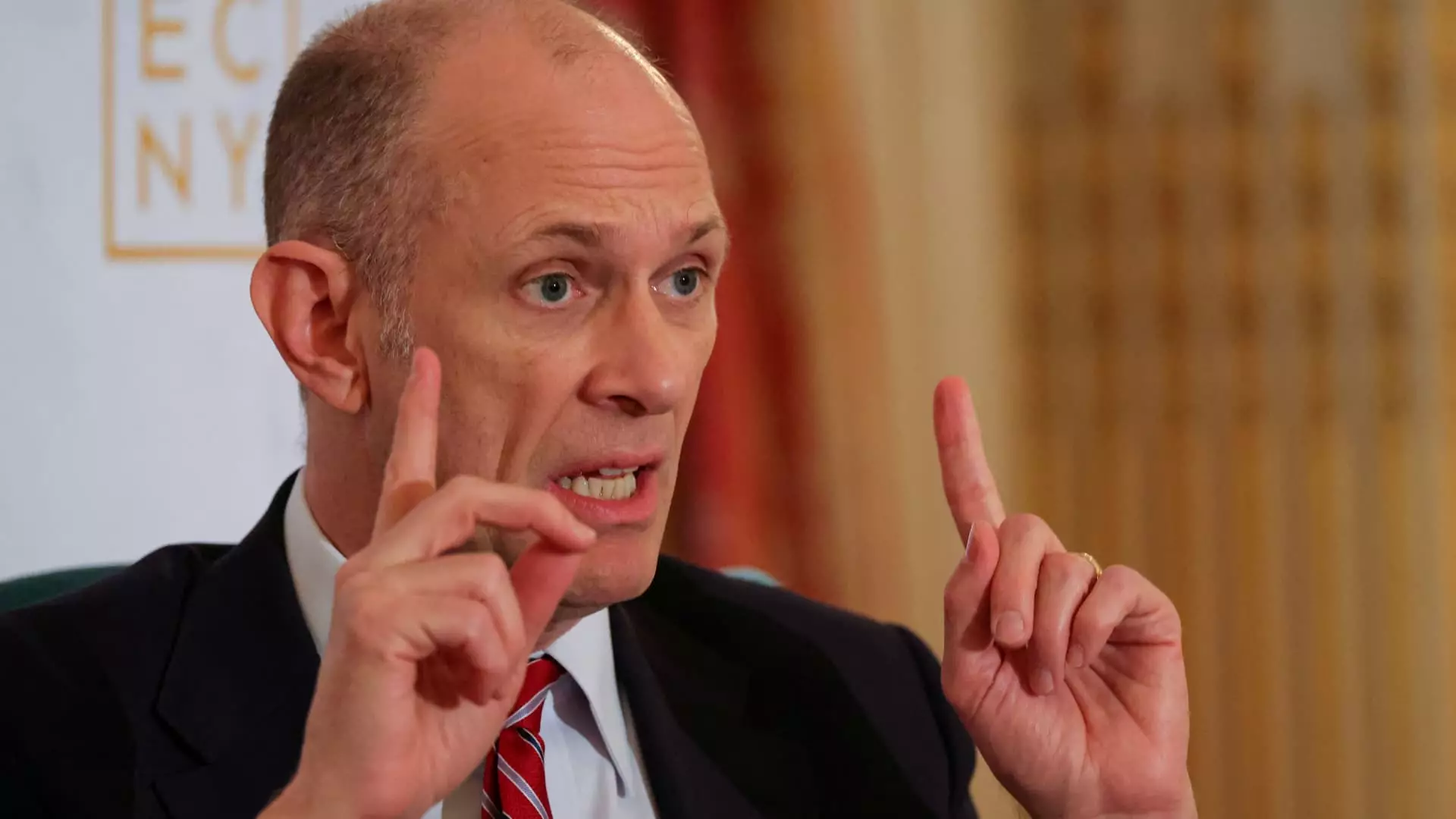Austan Goolsbee, the President of the Chicago Federal Reserve, recently found himself navigating the tumultuous waters stirred by President Donald Trump’s latest tariff rhetoric. In a revealing interview with CNBC, Goolsbee articulated the complex web of influences that tariffs have woven into the financial landscape, signaling a cautious stance on interest rates and monetary policy. His words echo a sentiment felt by many in the economic community: the unpredictability spawned by interventionist trade policies complicates an already strained economic framework.
Goolsbee’s assessment is underscored by a palpable tension; he acknowledges a favorable trajectory for interest rates but recognizes that Trump’s aggressive trade stance may necessitate a recalibration of expectations. The constant threat of tariffs—cited as a 50% increase on European imports and a 25% levy on iPhones produced outside the U.S.—adds layers of anxiety to an already volatile market atmosphere. The looming question remains: how will these tariffs shape inflation and employment in the long run? Goolsbee appears to be in a wait-and-see mode, emphasizing that clarity is essential before committing to specific monetary actions. His measured approach could speak volumes about the precarious intersection of fiscal policy and the Federal Reserve’s independence.
The Trade Policy Tug-of-War
The weight of Trump’s trade declarations cannot be understated. While ostensibly aimed at invigorating American manufacturing, the reality may be quite the opposite. Tariffs often serve as an economic boomerang, ricocheting back to harm consumers and destabilize job markets. Goolsbee is acutely aware of this risk, labeling potential tariff-induced circumstances as “stagflationary”—a nightmare scenario for any economic policymaker. This acknowledgment resonates with those who worry that the administration’s heavy-handed tactics could lead to rising prices juxtaposed with stagnant wages.
As the markets reel from the latest tariff threats, one questions the long-term vision of this trade approach. Goolsbee’s hope for a swift return to a foundationally sound economy is admirable but naïve in light of the persistent turmoil. His optimistic outlook on interest rates suggests belief in a quiet recovery, though one must wonder how feasible this is when trade policies continue to erect barriers instead of fostering collaboration.
Hope Amid a Sea of Doubt
Despite the setbacks presented by the current administration’s policies, Goolsbee remains cautiously optimistic about economic growth. He suggests that the climate surrounding fiscal policy could stabilize enough to lead to favorable interest rates in the future. It’s an intriguing juxtaposition; while a favorable growth trajectory is painted as possible, the brushstrokes of uncertainty continue to threaten to mar the landscape.
Goolsbee argues for a careful balance, emphasizing that the Fed ought to remain nimble rather than becoming “tied” to rigid orientations in policy-making. His hesitance to declare a definitive course of action reflects the acute awareness among central bankers that the situation can shift rapidly, leaving them scrambling to adapt. Yet, in acknowledging that rates could potentially decrease, he inadvertently brings to light the broader issue of how closely intertwined politics and economics have become under the current administration.
The Cost of Conventional Wisdom
Central bankers are generally reticent about straying too far into the realm of fiscal or trade policy, yet Goolsbee’s statements tend to cross that delicate line. His comments indicate that the lack of coherence in trade policy doesn’t just affect economic predictors; it also blurs the lens through which the Fed can analyze potential avenues for stimulating growth. As inflation becomes a focal point of conversation, consumers—and thus the economy—begin to bear the brunt of these financial tug-of-wars.
Furthermore, this chaotic environment raises daunting questions: How many more economic flashpoints can we withstand? As tariffs escalate and inflation remains an omnipresent specter, the fallout may prove to be more damaging than any temporary gain the administration hopes to achieve.
Goolsbee’s stance is ultimately an embodiment of today’s central banking dilemma: striving for stability in the eye of a political storm. His measured optimism feels almost like wishful thinking when weighed against a backdrop of ongoing uncertainty. The intersectionality of politics and economics demands a nuanced dialogue, one that goes beyond conventional policies and acknowledges the multifaceted pressures impacting both consumers and capital markets alike. As the Fed gears up for its next meeting, all eyes will be on how they navigate this increasingly perilous landscape shaped by ever-shifting tariffs and trade dynamics.

